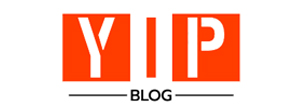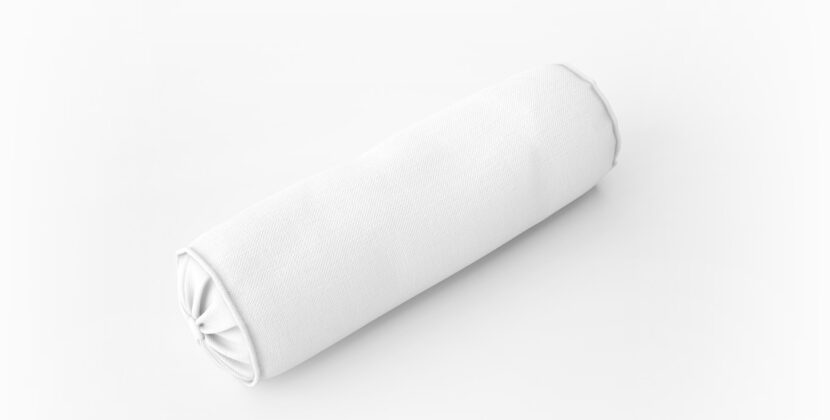Medical devices play an important role in improving patient care.
5 different ways that medical devices are improving patient care:
1- Accurate diagnosis and treatment:
Medical devices help doctors to diagnose and do the treatment accurately. For example, Imaging tools like MRIs and CT scans show detailed pictures of the body. These pictures can help medical professionals in finding tumours, infections, and other health issues.
Medical devices can help doctors in a number of ways to provide more precise diagnoses and more effective treatments:
1- Imaging devices: Imaging equipment such as MRIs and CT scans may produce detailed images of the body, assisting medical practitioners in detecting tumours, infections, and other health conditions. Early diagnosis and treatment may result from this, improving patient outcomes.
2- Monitoring devices: The term “monitoring devices” refers to equipment used to keep track of a patient’s vital indicators, such as heart rate, blood pressure, and blood oxygen levels. This information can help doctors identify changes in a patient’s condition and adjust the patient’s treatment plan as needed.
3- Interventional devices: Interventional devices can be used to treat medical problems inside the body. For instance, a pacemaker can be used to control a patient’s heart rate, or a stent can be used to open a blocked artery. By lowering the need for surgery or other invasive treatments, these devices can contribute to better patient outcomes.
4- Drug delivery devices: Devices that administer drugs or medicines to particular bodily parts are known as drug delivery devices. This can lessen negative effects and increase medicine effectiveness. Accurate diagnosis and treatment are becoming more and more dependent on medical devices.
They can give medical professionals additional knowledge about a patient’s health, enabling earlier diagnosis and more efficient therapy. Patients’ life increases, and they live longer. Healthy as a result.
2- Personalized care:

Medical devices can be used to provide personalized care to patients. For instance, insulin pumps can be set up to give insulin doses that are customised to each patient’s requirements. This can lower the risk of complications and assist to better control of diabetes.
Patient care has typically been provided in a one-size-fits-all manner. This suggests that regardless of their particular needs, all patients with a certain illness receive the same therapy. Sometimes, this approach is not always effective because it doesn’t include unique differences between patients
On the other side, medical equipment can be configured to provide personalized care. This means that the treatment can be tailored to the individual needs of each patient. For instance, insulin pumps can be programmed to deliver insulin doses based on the patient’s blood sugar levels. The patient’s diabetes will be better managed and their risk of complications will be reduced by giving them the right amount of insulin at the right time.
Since personalised treatment is more efficient than conventional one-size-fits-all methods, it is becoming increasingly significant in the healthcare industry.
Medical devices are essential to the provision of individualised care and are enhancing patient outcomes.
Other instances of how medical gadgets are being used to deliver individualised care are as follows:
1- Pacemakers: Pacemakers can be programmed to deliver electrical impulses to the heart at a specific rate. This can help to regulate the heart rate and to improve the heart’s pumping function.
2- Defibrillators: Defibrillators can shock the heart with an electric shock to get it back to a normal rhythm. Patients with cardiac arrhythmias may be able to save their lives with this.
3- Neuromodulation devices: To stimulate the nerves in the brain or spinal cord, neuromodulation devices can be employed. This can be used to treat many illnesses and ease discomfort while also enhancing movement.
These are but a handful of instances of how medical devices are being applied to deliver individualised care. We may anticipate seeing even more applications for medical devices to enhance patient care as medical technology advances.
3- Remote monitoring:
Remote monitoring is a way to track a patient’s health remotely using medical devices. This can be accomplished in a number of ways, such as by utilising sensors to gather information about the patient’s vital signs or by employing video conferencing to enable clinicians to engage and see the patient.
Patients who suffer from chronic conditions like diabetes or heart failure may find remote monitoring to be very beneficial. These patients frequently need to be closely watched, yet they might not be able to visit the doctor’s office frequently. In order to make sure that these patients are properly taking their meds and that their diseases are being adequately controlled, remote monitoring can be of assistance.
There are several benefits to remote monitoring. First, it can help to improve patient outcomes. According to studies, patients who are remotely monitored are more likely to stick to their treatment programmes and have better health results than those who are not.
Second, remote monitoring can help to reduce healthcare costs. By allowing patients to be monitored from home, healthcare providers can avoid the need for unnecessary office visits. This can save both patients and providers money.
Third, remote monitoring can improve patient satisfaction. Patients who have access to home health monitoring frequently feel more in control of their illness and are happier with their care.
In general, remote monitoring is a useful tool that can enhance patient care in a variety of ways.
It may contribute to better patient outcomes, lower healthcare expenses, and more patient satisfaction.
Here are some particular instances of how using remote monitoring has helped patients:
1- Patients with heart failure can monitor their weight, blood pressure, and heart rate remotely. Doctors can utilise this data to modify a patient’s prescription and ensure that their condition is adequately controlled.
2- Patients with diabetes can use remote monitoring to track their blood sugar levels. Doctors can utilise this information to modify the patient’s insulin dosage and guarantee that the problem is properly handled.
3- Remote monitoring is a tool that patients with chronic obstructive pulmonary disease (COPD) can use to check their lung function. Doctors can modify the patient’s treatment plan using this information to ensure that the ailment is adequately controlled.
The subject of remote monitoring is expanding quickly, and several new applications are constantly being created. Remote monitoring is anticipated to contribute considerably more in the future to enhancing patient care as technology advances.
4- Surgery and procedures:

Medical devices are used in a wide variety of surgical procedures, and they are constantly being improved to provide better patient care. For example, robotic surgery devices can help surgeons to perform complex procedures with greater precision and accuracy. As a result, patients may experience quicker recovery times, less pain, and better results.
Here are some other ways that medical devices enhance the care provided to patients during operations and procedures:
1- Minimally invasive surgery: Medical devices are used to perform minimally invasive surgery, which is a type of surgery that uses small incisions to access the body. This type of surgery is often associated with less pain, shorter recovery times, and better cosmetic results than traditional open surgery.
2- Image-guided surgery: Medical devices are used to guide surgeons during surgery. For example, ultrasound devices can be used to see inside the body during surgery, and X-ray devices can be used to guide surgeons as they place implants. This type of technology can help to improve the accuracy of surgery and reduce the risk of complications.
3- Surgical robots: Surgical robots are computer-controlled devices that are used to perform surgery. These robots can help surgeons to perform complex procedures with greater precision and accuracy than is possible with traditional surgical techniques.
Overall, medical devices are playing an increasingly important role in surgery and procedures. This may enhance the patient’s comfort and facilitate the healing process.
Here are some additional examples of how medical devices are improving patient care in surgery and procedures:
1- Artificial limbs and implants: Medical devices such as artificial limbs and implants can help to improve the quality of life for people who have lost limbs or have other physical disabilities.
2- Monitoring devices: Monitoring devices are those devices that are used to track patient essential indicators such as heart rate, blood pressure, and blood oxygen levels. This information can help to ensure that the patient is safe and that the procedure is going smoothly.
3- Pain management devices: Medical devices such as pain pumps and nerve blocks can help to control pain after surgery. This can help to improve the patient’s comfort and make the recovery process easier.
As medical technology continues to advance, we can expect to see even more ways that medical devices can improve patient care in surgery and procedures.
5- Home health care:
Medical devices can be used to provide home health care to patients. This can help patients to stay home and to receive the care they need without having to be admitted to the hospital.
Here are some ways that medical devices are improving patient care through home health care:
1- Patients can stay home and receive the care they need. This can be a major benefit for patients who are elderly, frail, or have chronic health conditions. Staying home can help patients maintain their independence and quality of life.
2- Medical devices can help to monitor patients’ health remotely. This means that patients do not have to travel to the doctor’s office for appointments, and their health can be monitored 24/7. This can help to identify problems early and prevent serious complications.
3- Medical devices can provide reminders to patients to take their medications or perform other self-care tasks. This can help to improve patients’ adherence to their treatment plans, which can lead to better health outcomes.
4- Medical devices can provide education and support to patients and their caregivers. This can help patients to better understand their condition and how to manage it. It can also help caregivers to provide better care for their loved ones.
Overall, medical devices are playing an increasingly important role in home health care. They are helping to improve patient care by allowing patients to stay home, receive remote monitoring, adhere to their treatment plans, and get the education and support they need.
Here are some specific examples of medical devices that are used in home health care:
- Incontinence devices help people who have difficulty controlling their bladder or bowels.
- Respiratory devices help people who have difficulty breathing.
- Monitoring devices track a patient’s vital signs, such as heart rate, blood pressure, and blood sugar levels.
- Medication delivery devices dispense medications at specific times or intervals.
- Telehealth devices allow patients to communicate with their doctor or nurse remotely.
These are just a few examples of the many medical devices that are used in home health care. As technology continues to advance, we can expect to see even more innovative devices that will improve patient care in the home.
Conclusion:
Medical devices are playing an increasingly important role in improving patient care. They are being used to improve diagnosis and treatment, provide personalized care, monitor patients remotely, and improve surgery and procedures. Medical devices are also being used to provide home health care, which can help patients to stay home and receive the care they need without having to be admitted to the hospital.
As medical technology continues to advance, we can expect to see even more ways that medical devices can improve patient care. The quality of life for patients all around the world is being improved by these devices, which are assisting in making healthcare more precise, individualised, and effective.
Overall, medical devices are playing an increasingly important role in improving patient care. They are helping to make diagnoses more accurate, treatments more effective, and care more personalized. As medical technology continues to advance, we can expect to see even more ways in which medical devices can improve patient care.
You can also read another blog, ” Natural Skin Care Products That Work “






